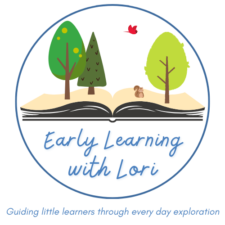Polar Habitat Sensory Bin for Preschool Science Fun

Are you planning a winter, arctic, or animal theme in your classroom? Or maybe, like me, you’re planning science activities for a zoo-themed summer camp. Either way, a polar habitat sensory bin for preschool is a simple, hands-on way to help young children explore where polar animals live. In this sensory-rich activity, children engage with pretend snow, icy elements, and animal figures as they learn about Arctic and Antarctic habitats. Best of all, it’s easy to adapt for different ages and sensory needs!
What Is a Habitat?
A habitat is the place where an animal lives. Every animal needs food, water, shelter, and space. Polar animals—like polar bears and some penguins—live in cold habitats full of snow, ice, and water.
At the zoo, these animals live in carefully built habitats that give them what they need to stay healthy and safe. That might include fish for seals, meat for polar bears, and places to swim or rest. Zoo enclosures have walls and boundaries that keep animals in the right habitat while keeping visitors safe, too.
Introducing the Polar Habitat Sensory Bin
This polar habitat sensory bin for preschool was a huge hit at our zoo-theme summer camp! I used it with children ages 2–6 to explore the kinds of animals that live in cold environments. You can use this bin as part of a larger zoo or animal unit, or during a winter-themed week.
Before we explored the bins, I started with a short group time introducing the idea of a habitat and showing examples of polar animals. I reminded the children that animals need certain things to survive, even in the snow!
What’s in the Polar Habitat Sensory Bin?

- 2 teaspoons instant snow + 1 cup water (per tray) Follow instructions on the packet
- Plastic polar animals (like polar bears, penguins, seals)
- Large rocks (safe for ages 3+)
- Blue pool noodle slices (as floating ice)
- Glass gems (older groups only)
- Clear or white take-out containers (as bear dens) Cut in half from top to bottom.
- Mini white paper or plastic cups (penguin perches)
Half the bins represented the Arctic (with animals like polar bears and Arctic foxes), and half represented the Antarctic (with penguins and seals). Children loved moving animals around, building snowy structures, and making up their own stories.


Dry Alternative for Sensory Sensitivities
Some children are sensitive to wet or mushy textures. Here’s how to make a dry polar habitat sensory bin for preschool learners:
- Use white felt, cotton balls, or fleece fabric for snow
- Use clear acrylic cubes or foam blocks as pretend ice
- Lay out a soft white mat and set animals on top
- Add small accessories for creative play

This version of sensory bin keeps the focus on pretend play and science exploration without messy cleanup.
How to Introduce the Activity
Here’s how I introduced the center to my campers:
“Today we’re going to explore where polar animals live! These animals live in a cold place called a polar habitat. It has snow, ice, and water. A habitat gives animals four things they need—food, water, shelter, and space.”
Ask open-ended questions:
- “What do you think polar bears eat?”
- “Where could a penguin sleep?”
- “Can you build a shelter with these rocks or ice cubes?”
If children ask about food:
“Polar bears eat meat, penguins eat fish, and seals love to swim and find their food in the water. In the wild, these animals live where they can find food. In a zoo, the zookeepers give each animal just what it needs to stay healthy.”
Then, invite them to explore the bins!

Clean-Up and Storage Tips
- Use low-sided trays to contain the materials.
- Place towels or a plastic shower curtain under trays to catch spills.
- If possible, store the snow when not in use. Check the label on the instant snow to see preferred storage methods.
- Dry versions can be stored fully assembled for future centers.
Learning Benefits
This polar habitat sensory bin for preschool supports:
- Early science understanding (habitats, animal needs)
- Language development (naming animals, describing habitats, storytelling)
- Fine motor skills (scooping, placing, arranging)
- Creative thinking and imagination
Related Posts and Resources
Set up a zoo in your classroom using everyday materials. Preschool Zoo Habitat Activity: Create Animal Habitats
This paper folding craft helps students explore animal habitats through fine motor craft.
Here’s a free movement game that you can play indoor or out.





